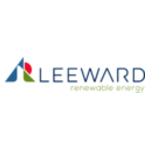Sign up for daily news updates from CleanTechnica on email. Or follow us on Google News!
The Iron Age has been aching for a comeback after centuries lingering in the shadows, and the energy transition is finally providing it with a new beginning. Iron is the key ingredient in new large-scale, long duration energy storage platforms that will shunt more renewable resources into the grid, ensuring resiliency and reliability even when the sun isn’t shining or the wind doesn’t blow.
Why Do We Need New Energy Storage Platforms, Anyway?
Lithium-ion battery arrays have become the go-to energy storage technology for renewable resources. They smooth out variations in electricity generated by wind turbines and solar panels for a few hours at a time, which is enough to handle most daily grid management chores as well as emergency backup power when needed.
Nevertheless, this year the US Department of Energy is launching a new $75 million, cutting-edge energy storage technology accelerator called the Grid Storage Launchpad, and the big question is why. Lithium-ion batteries can scale up to grid scale, as illustrated by the massive 750-megawatt Moss Landing lithium-ion battery array in California.
The US Department of Energy is ready with an answer. They have been pushing the case for long duration energy storage platforms that can last at least 10 hours, or much longer, to accommodate a grid saturated with intermittent energy resources. As large as it is, the Moss Landing facility only provides for four hours of discharge duration.
“While shorter duration storage is currently being installed to support today’s level of renewable energy generation, longer duration storage technologies are needed as more renewables are deployed on the grid,” the Energy Department explains.
In addition to stretching out the duration of the system, the Energy Department is also looking to reduce costs by 90%, partly by deploying Earth-abundant materials that are not exposed to high costs, supply chain risks, toxicity issues, and fire hazards.
One proven alternative is already at hand, in the form of pumped hydropower storage systems. However, their application is geographically limited because of water and elevation requirements. Socio-cultural and environmental issues can also present obstacles, though repurposing old fossil energy sites can offer a less contentious option.
The Return Of The Age Of Iron, Again
The Iron Age is a relic of 19th-century historical accounting, which divides early human history into three chronological periods defined by a key material: the Stone Age, the Bronze Age, and the Iron Age. None of these materials ever left the scene entirely, of course. In particular, iron (chemical symbol Fe) is a prominent feature in the modern industrial economy through its use in steelmaking, among other areas. Being the fourth-most abundant element on the surface of the Earth also helps.
Iron has already begun pushing its way into the small-scale energy storage field, one example being the new lithium-iron-phosphate EV battery developed by the well known Chinese firm CATL.
Large-scale energy storage innovators are also beginning to rediscover iron, with an assist from the Energy Department. One example is the US startup ESS. The firm received funding from the Energy Department’s ARPA-E office for high risk, high reward projects back in 2012, to help commercialize its new iron-based flow battery.
Flow batteries deploy the ability of two specialized fluids to generate electricity when they flow adjacent to each other, separated by a thin membrane. ESS took the ball and ran with it.
“ESS showcased its all-iron flow battery at Intersolar North America in 2017 and reached another milestone in 2019 when the US Department of Defense — a big fan of clean tech — installed the company’s Energy Warehouse™ flow battery at Marine Corps Base Camp Pendleton in San Diego,” CleanTechnica noted in 2021.
ESS has been rather busy since then. Among other recent developments, last fall the company announced a new strategic collaboration with Honeywell.
“The relationship builds upon each company’s development of energy storage systems, and brings together ESS’ market-leading, patented IFB [iron flow battery] design with Honeywell’s advanced materials and energy systems expertise,” ESS explained.
Coal State Kills Coal, With Energy Storage
Form Energy is another US firm leveraging iron for long duration energy storage. Its contribution to the field is an iron air battery, which leverages the ability of iron to rust and reform. “Iron-air batteries literally work by exposing iron to a stream of air,” CleanTechnica noted in 2021. “With an assist from an electrolyte and a membrane, the result is an electrical current and a pile of rust. Charging up the battery is simply a matter of applying an electrical current, reformulating the rust back into iron.”
That’s actually not so simple, but Form is ready to commercialize its new energy storage platform. The company is building its first factory in West Virginia, picking the industrial city of Weirton on the Ohio River from a pool of 500 other proposed sites.
“The attraction consisted partly of availability of a suitable brownfield, the abandoned Weirton Steel plant on the Ohio River,” CleanTechnica observed. “Access to river, rail, and highway transportation corridors was another factor.”
West Virginia has a long, deep history in the fossil energy industry and it is still among the top coal and natural gas producing states in the US, so it’s a little ironic to see West Virginia hosting an energy storage venture aimed directly at squeezing coal out of the US power generation picture, and natural gas, to boot.
Nevertheless, some public officials in West Virginia have seen the writing on the energy transition wall. Another factor influencing Form’s decision to settle in West Virginia is a $290 million incentive package engineered by the state’s Department of Economic Development.
Apparently Republican State Treasurer Riley Moore did not get the same memo. Although his home state will soon host a factory that will send new long duration energy storage technology all over the country, Moore is currently running for Congress on a fossil energy protectionist platform. “I stopped the woke corporate agenda, put an end to the backdoor gun registry, fought for school choice, and stood up for our jobs against the radical green energy lobby,” Moore’s campaign website states.
 Chip in a few dollars a month to help support independent cleantech coverage that helps to accelerate the cleantech revolution!
Chip in a few dollars a month to help support independent cleantech coverage that helps to accelerate the cleantech revolution!
More & Better Iron-Based Energy Storage For The USA
So much for that. Meanwhile, Energy Department researchers at the Pacific Northwest National Laboratory are developing a new water-based flow battery based on iron, with the aim of pushing down costs and simplifying the supply chain while improving performance.
“The researchers report in Nature Communications that their lab-scale, iron-based battery exhibited remarkable cycling stability over one thousand consecutive charging cycles, while maintaining 98.7 percent of its maximum capacity,” PNNL explains.
“For comparison, previous studies of similar iron-based batteries reported degradation of the charge capacity two orders of magnitude higher, over fewer charging cycles,” they add.
As described by PNNL the new battery unique because it deploys an industrial chemical commonly available in bulk quantities, called nitrogenous triphosphonate, nitrilotri-methylphosphonic acid or NTMPA. Among other uses, NTMA is used to prevent corrosion at water treatment plants.
“Phosphonates, including NTMPA, are a broad chemical family based on the element phosphorus. Many phosphonates dissolve well in water and are nontoxic chemicals used in fertilizers and detergents, among other uses,” PNNL notes.
With NTMPA in hand, the research team formulated a liquid electrolyte that accommodates iron under ambient conditions, helping to simplify the technology and reduce costs. So far the team has achieved an energy density of up to 9 watt-hours per liter (Wh/L). That’s far below the density of commercially available vanadium flow batteries. However, PNNL anticipates that its iron flow battery can scale up to provide for comparable performance, without incurring excessive costs.
Stay tuned for more on that. The new Grid Storage Launchpad is launching later this year with a mission to shuttle new energy storage technologies like the new PNNL flow battery into commercial application as quickly as possible.
Follow me @tinamcasey on Bluesky, Threads, Post, and LinkedIn.
Image: Energy storage researchers at the Energy Department’s Pacific Northwest National Laboratory are working on an iron-based flow battery, aimed at outperforming lithium-ion batteries on duration and cost.
Have a tip for CleanTechnica? Want to advertise? Want to suggest a guest for our CleanTech Talk podcast? Contact us here.
Latest CleanTechnica TV Video
CleanTechnica uses affiliate links. See our policy here.





